Attenuated Ground – the slow seismogenic zone (2021)
Slow Moving Waters. TarraWarra Biennial 2021. Curated by Nina Miall
Materials: double bass, toffee, seismometer, wooden table, tactile transducers, slow earthquake signal from the Japan Trench (Japan Sea), form ply, plaster, surface vibration speakers
Project Description: Tactile exciters, transferred infrasonic slow earthquake data recorded from the Japan Trench, to the strings of a double bass which was embedded in cast toffee. As the toffee shifted to a viscous state, the tone of the strings altered. (Slow earthquake data recorded within the Japan Trench was provided by Prof. Yoshihiro Ito from the Disaster Prevention Research Institute, Kyoto, Japan)

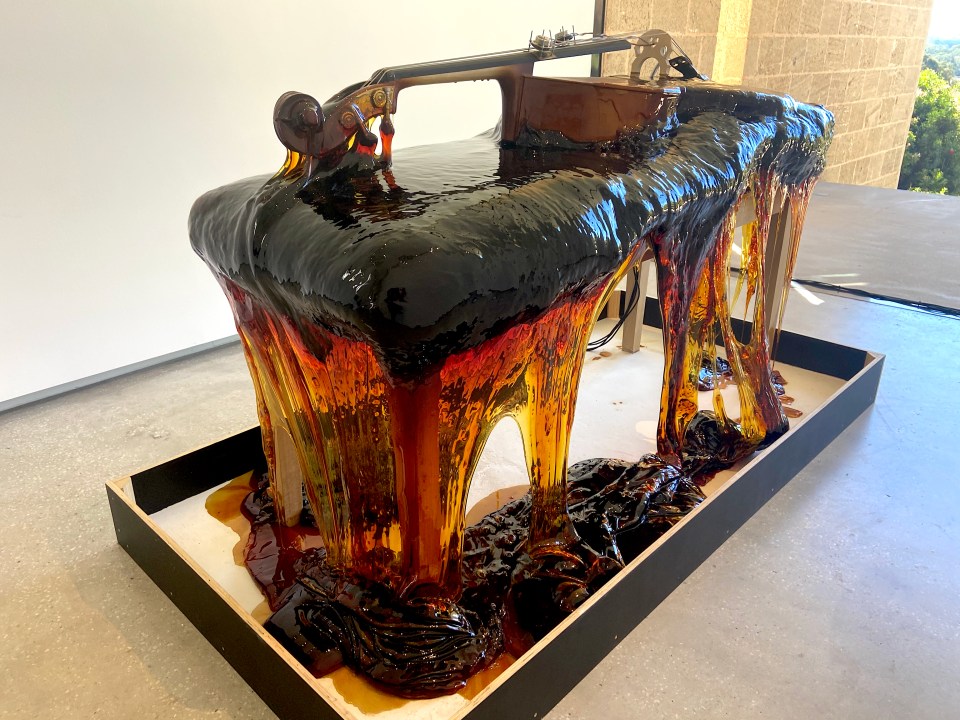
Video clip: detail of tactile exciters
Brothers (2021)
Composing Archipelagos. Curated by Jasmin Stephens. Contemporary Art Tasmania
Materials: obsidian, crystal, transducer speakers, harmonic tremor acoustic data from Brothers Volcano (Aotearoa New Zealand)
Project Description: Obsidian from Tūhua Mayor Island, located off Aotearoa New Zealand’s Bay of Plenty, was melted and re-fused with crystal to form a slab which was inserted into the gallery wall. Transducer speakers were attached to the glass slab, which amplified the sound of harmonic tremor recorded at the Brothers Volcano in the Bay’s Kermadec Trench (hydroacoustic recordings of harmic tremor provided by Dr. Robert Dziak, Pacific Marine Environmental Laboratory, National Oceanic and Atmospheric Administration)
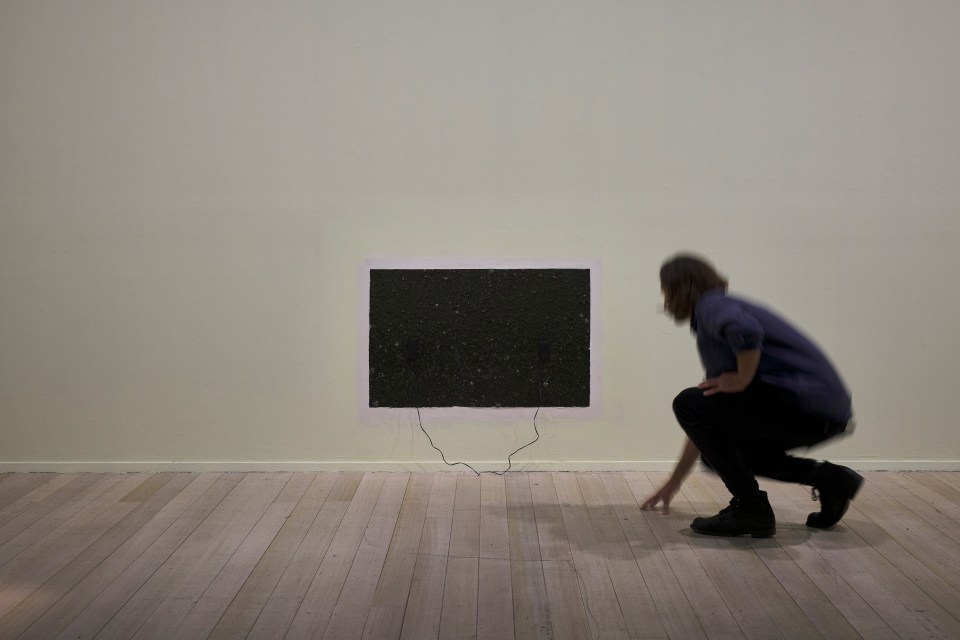

audio clip: Brothers Volcano harmonic tremor audio rendering (extract)
By This Lake (2021)
Inland Tides. Curated by Grace Herbert. RISING. Melbourne 2021
Materials: frozen inland lake water, frozen civic water, Harcourt granite, neon light, hydrophones, speakers
Project Description: Large blocks of ice were ‘parked’ on the top floor of the Golden Square Car Park in the centre of Melbourne’s central business district. The ice blocks were composed of frozen layers of water, sourced from both the Melbourne water supply via the tap, and inland lakes in Victoria. Frozen into the ice blocks, hydrophones captured the slowly cracking ice. The live sound was amplified through speakers installed in a nearby stairwell. Embedded within each ice block were boulders of Harcourt granite used for the construction of the city of Melbourne. Around each boulder neon lights pulsed an algorithm based on the approximate time of the granite’s formation, 358,900 000 million years ago, with the duration of each pulse reflecting the average length of a human breath.
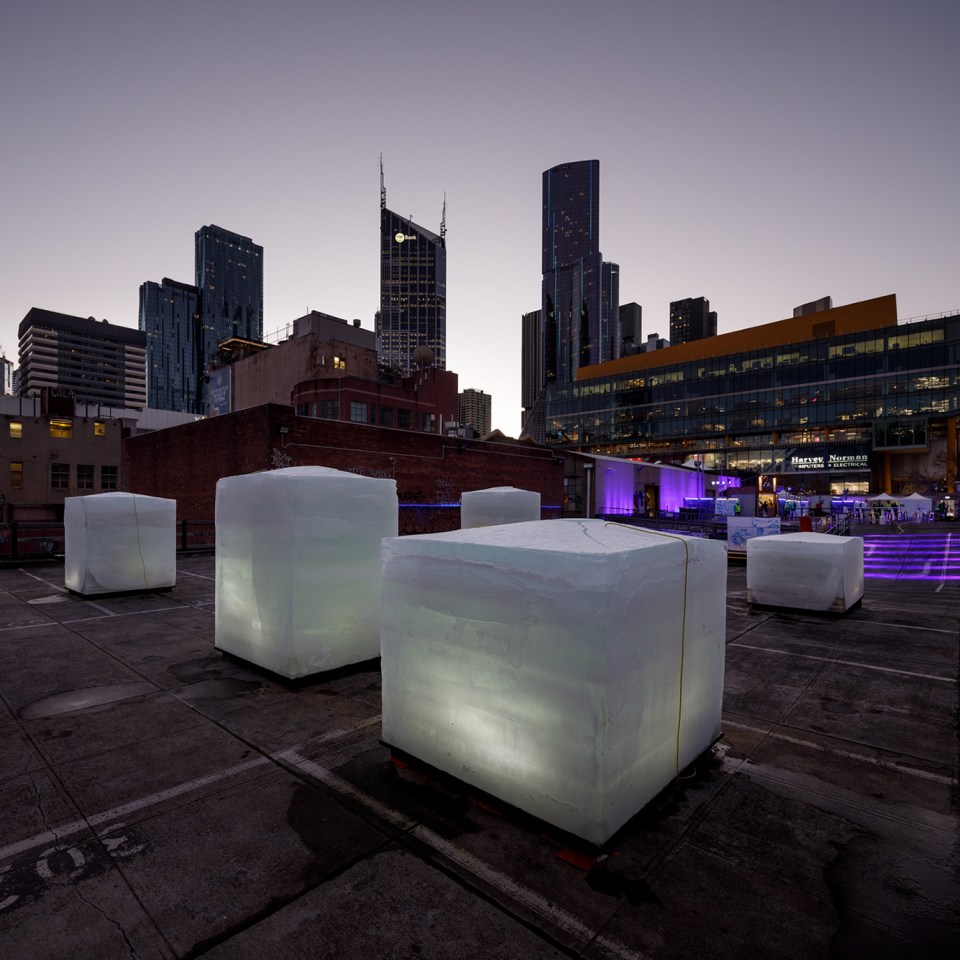

Rueremus (2021)
MONA FOMA 2021. Hobart, Tasmania
Materials: frozen civic water, rocks representing the different geologic eras of Tasmania, steel tubing, steel cable, acrow props, and live performances by violinist Alethea Coombe
Project description: Suspended within a former car mechanic workshop, large blocks of ice held rocks representing the different geologic periods of lutruwita / Tasmania. As the ice melted, the rocks fell to the concrete workshop floor.
Violinist Alethea Coombe performed adaptations of John Cage’s One6, a composition comprising long, flexible time brackets, with long overlaps between them. Performing with the ice sculptures, Alethea played sustained tones, responding to the unstable blocks of ice and sonic impact of the falling rocks.

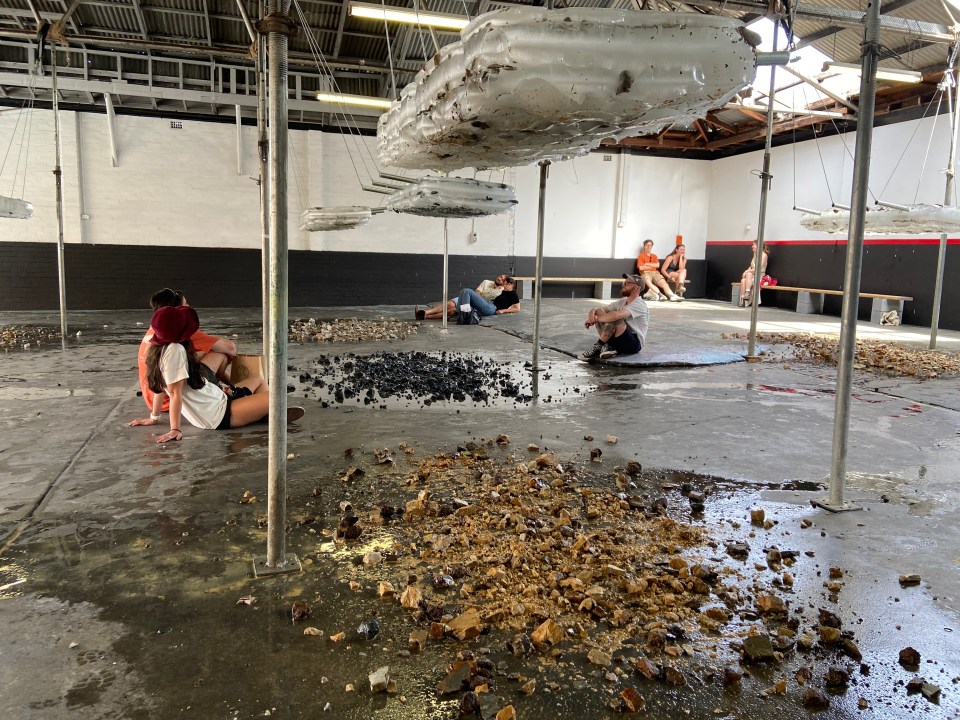
Video Clip – Alethea Coombe violin performance of One6 by John Cage
Underground (2015)
Contemporary Art Tasmania Solo Commission
Materials: crushed and rammed concrete, mining vehicle tyre rubber inner tubes, hosing, real-time global seismic data stream, mobile seismic unit, motion-sensors
Project description: A simple arc wall comprised of rammed, re-cycled crushed concrete contained two earthmover tyre inner tubes connected via hoses to an air compressor. Global seismic data from live web-based monitoring streams, as well as local ‘vibrations’ collected within the gallery administration and gallery space, triggered the air compressor to release air and inflate the inner tubes. Contingent on the intensity and duration of the local or global live seismic events, the inner tubes inflated and destabilised the overall form, triggering a process of destruction over the course of the exhibition.

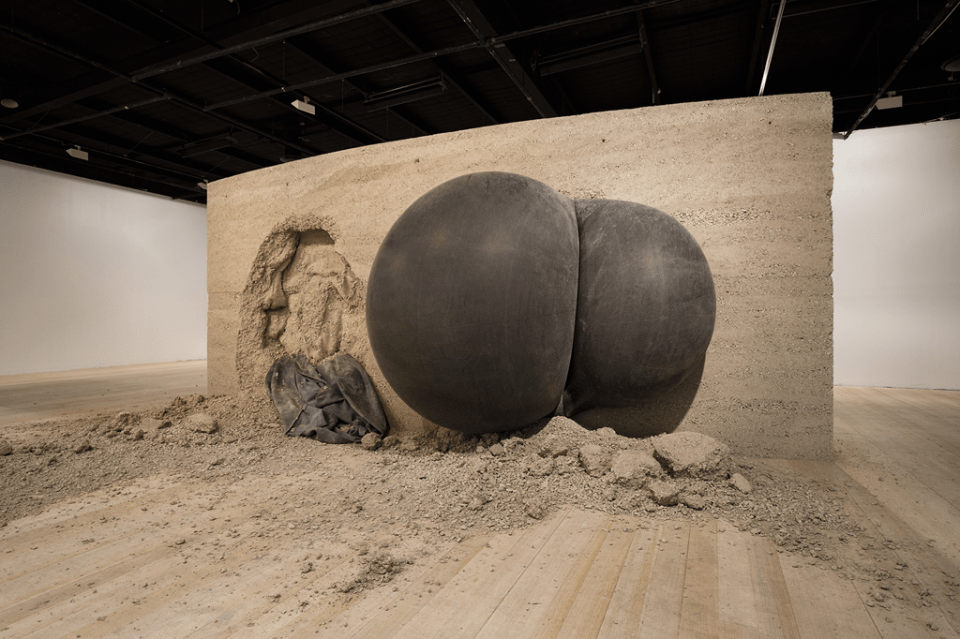
Video Clip – time lapse of global seismic events and local vibration impact on the artwork
Rhyolite (2019)
Lost Rocks (2017-2021). A Published EventYale UniversityRMIT UniversityUniversity of Melbourne
Publication description: Lost Rocks (2017-21) is an art project that engages readers, artists and audiences with the Natural Sciences, specifically the field of geology. Lost Rocks (2017-21) is a 5 year publishing project that invites 42 artists and writers to select a missing rock from a discarded Tasmanian rocks and minerals specimen board, formerly used for educating students of geology. Each artist is invited to research a missing rock or mineral, and compose a 96 page fictiönella in response, communicating new geological knowledge through creative, experimental and communicative texts.